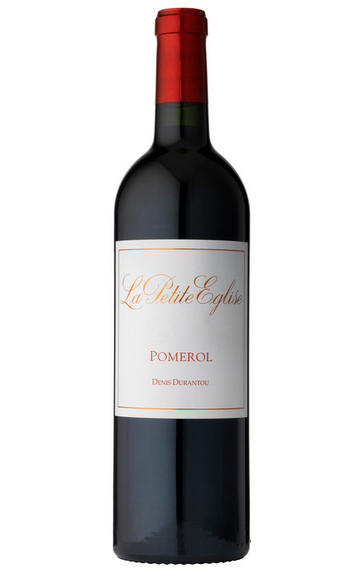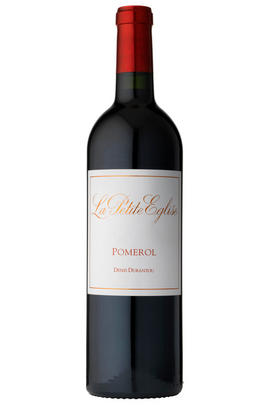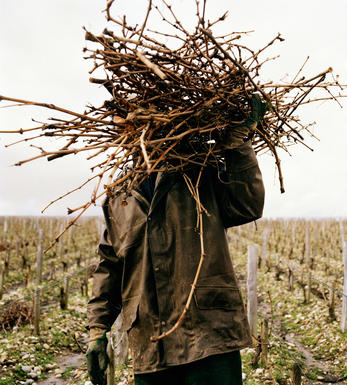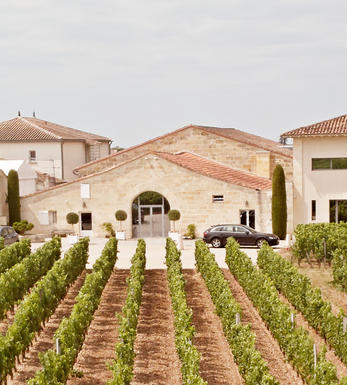
2021 La Petite Eglise, Pomerol, Bordeaux

Critics reviews
The 2021 La Petite Eglise was picked September 28–29 and raised in 60% new oak. It has a pretty, floral bouquet that is, as usual, a little more expressive than the Grand Vin at this stage. The palate is medium-bodied with fine tannins, taut at first though offering finely tuned, tart red fruit on the finish. Just give it a couple of years in bottle.
Neal Martin, vinous.com, (May 2022)
Lifted and floral on the nose and palate. Juicy but structured, the grainy tannins providing persistence and drive. Should fill out further in the bottle.
Drink 2027 - 2036
James Lawther, jancisrobinson.com (May 2022)
A blend of 90% Merlot and 10% Cabernet Franc, the 2021 La Petite Eglise opens in the glass with aromas of dark berries, licorice, loamy soil and black truffle. It's medium to full-bodied, concentrated and tensile, with terrific depth at the core and a long, saline finish.
William Kelley, Wine Advocate (Apr 2022)
A dark-fruited Pomerol with pretty notes of cloves, sandalwood, dried lavender and tar. Medium-to full-bodied with ripe, powdery tannins. Coffee notes at the end. Excellent intensity and structure for the vintage. 90% merlot and 10% cabernet franc.
James Suckling, jamessuckling.com (May 2022)
About this WINE

Chateau l'Eglise-Clinet
Château L'Eglise-Clinet is now amongst the elite of Pomerol producers. Its vineyards were originally part of Château Clinet and Château Clos l`Eglise respectively, and the property came into being in the 1950s.
L'Eglise-Clinet has been owned and run by Denis Durantou since 1982. Its 5.5 hectares of vineyards are located on the Pomerol plateau, where the soils are rich in gravel, clay, sand and iron. The vines have a high average age of around 45 years, with a proportion of them dating back to pre-1956, having escaped the brutal frosts of that year.
L'Eglise-Clinet's wine is typically a blend of 80% Merlot and 20% Cabernet Franc. The grapes are vinified in a combination of concrete vats and stainless steel vats. The wine is then aged in small oak barriques (50-70% new) for 18 months.

Pomerol
Pomerol is the smallest of Bordeaux's major appellations, with about 150 producers and approximately 740 hectares of vineyards. It is home to many bijou domaines, many of which produce little more than 1,000 cases per annum.
Both the topography and architecture of the region is unremarkable, but the style of the wines is most individual. The finest vineyards are planted on a seam of rich clay which extends across the gently-elevated plateau of Pomerol, which runs from the north-eastern boundary of St Emilion. On the sides of the plateau, the soil becomes sandier and the wines lighter.
There is one satellite region to the immediate north, Lalande-de-Pomerol whose wines are stylistically very similar, if sometimes lacking the finesse of its neighbour. There has never been a classification of Pomerol wines.
Recommended Châteaux : Ch. Pétrus, Vieux Ch. Certan, Le Pin, Ch. L’Eglise-Clinet, Ch. La Conseillante, Ch. L’Evangile, Ch. Lafleur, Trotanoy, Ch. Nenin, Ch. Beauregard, Ch. Feytit-Clinet, Le Gay.

Merlot/Cabernet Franc
Merlot and Cabernet Franc are grape varieties commonly used in Bordeaux-style blends, particularly in the Bordeaux region of France. When these two grapes are blended, they can create a wine that combines the best characteristics of each variety.
Merlot is known for its smoothness, soft tannins, and ripe fruit flavours. It often contributes black cherry, plum, and chocolate flavours to the blend. The grapes are relatively easy to grow and ripen earlier than other Bordeaux varieties, making them versatile for blending.
Cabernet Franc, on the other hand, adds structure, depth, and complexity to the blend. It typically brings aromas of red fruits such as raspberry and strawberry, along with herbal notes like bell pepper and tobacco. These grapes have thinner skins and can be more challenging to cultivate, requiring specific growing conditions to reach their full potential.
When Merlot and Cabernet Franc are combined, the result is a well-balanced wine with various flavours and aromas. The blend often exhibits a Bordeaux wine's medium to full body, along with a smooth texture and moderate tannins. The specific flavour profile can vary depending on the proportions of each grape in the blend and the terroir and winemaking techniques employed.


Buying options
Add to wishlist
Description
The 2021 La Petite Eglise was picked September 28–29 and raised in 60% new oak. It has a pretty, floral bouquet that is, as usual, a little more expressive than the Grand Vin at this stage. The palate is medium-bodied with fine tannins, taut at first though offering finely tuned, tart red fruit on the finish. Just give it a couple of years in bottle.
Neal Martin, vinous.com, (May 2022)
wine at a glance
Delivery and quality guarantee